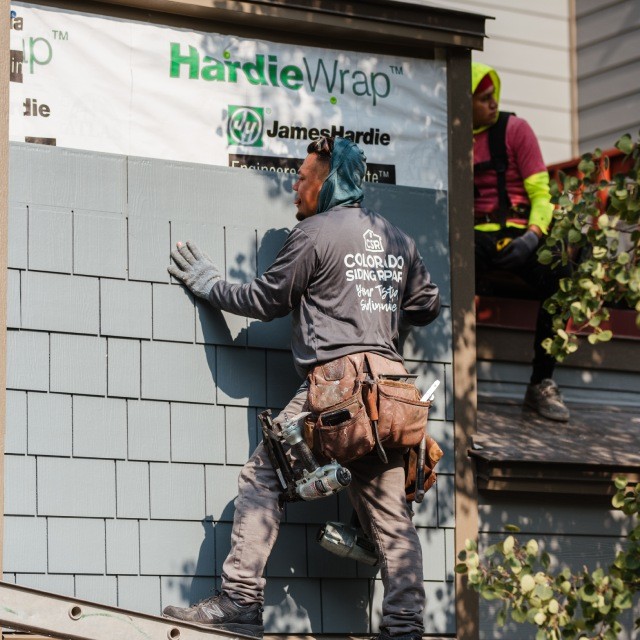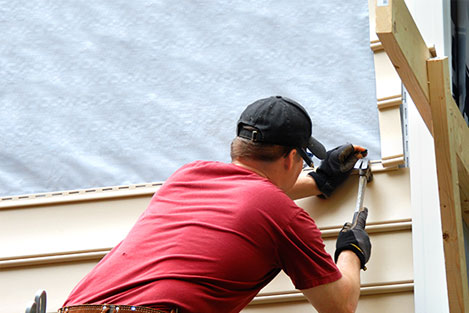Affordable Morris Siding Contractor Offering Superior Craftsmanship
Affordable Morris Siding Contractor Offering Superior Craftsmanship
Blog Article
The Crucial Overview to the Different Sorts Of Exterior Siding and Their Special Benefits
In the realm of home renovation, selecting the ideal house siding is a critical decision that impacts both visual charm and functional performance. With so many options to consider, which exterior siding product absolutely stands out for your specific project?
Wood Exterior Siding
Timber siding, a popular selection for residential outsides, provides a timeless aesthetic that combines all-natural beauty with structural integrity. This exterior siding product is readily available in various designs, consisting of clapboard, roof shingles, and board-and-batten, permitting homeowners to personalize their façade to match their style choices. Wood home siding is typically crafted from sturdy varieties such as cedar, redwood, or pine, which are known for their strength and capability to withstand environmental stress factors.
One of the main advantages of wood siding is its exceptional insulation buildings, which can contribute to power effectiveness and reduced home heating prices. In addition, wood home siding is eco-friendly, making it an environmentally friendly alternative when sourced sustainably. Routine maintenance, including paint or staining, can prolong its life expectancy and enhance its look, allowing house owners to preserve the all-natural appeal of the timber.
However, potential downsides consist of vulnerability to parasites, rot, and weather damage, requiring ample treatment and upkeep - morris siding contractor. Despite these issues, when effectively cared for, timber exterior siding can offer a long lasting and gorgeous solution that improves the personality of a home while offering a cozy, inviting ambience

Plastic Home Siding
Vinyl home siding has become a leading option for home owners looking for a low-maintenance outside option that combines longevity and cost. This flexible product is crafted from polyvinyl chloride (PVC), making it immune to numerous climate condition, including wetness and UV rays. Consequently, vinyl siding does not warp, rot, or fade, guaranteeing lasting visual charm.
Among the primary benefits of plastic exterior siding is its comprehensive variety of colors and designs, allowing property owners to achieve the desired look for their building without the need for constant repainting. Additionally, plastic house siding is simple to install, which can substantially lower labor prices throughout construction or restoration jobs.
Plastic house siding also contributes to energy efficiency. Numerous alternatives function insulation backing, which enhances thermal efficiency, helping to maintain comfy indoor temperatures and potentially reducing energy costs. Additionally, its smooth surface area promotes very easy cleaning, needing only regular cleaning with a yard hose pipe to get rid of dirt and debris.
Fiber Concrete Siding
Fiber concrete siding has actually obtained grip amongst homeowners and home builders alike as a result of its exceptional mix of longevity and aesthetic convenience. Made up of a combination of sand, concrete, and cellulose fibers, this siding choice is crafted to withstand extreme weather, including high winds, hefty rain, and temperature level variations, making it a durable selection for residential exteriors.
One of the main benefits of fiber concrete house siding is its resistance to insects, such as termites, and its non-combustible nature, offering boosted fire safety. morris siding contractor. Additionally, it is readily available in a large selection of structures, colors, and designs, allowing property owners to achieve their wanted visual without sacrificing efficiency
Another benefit is its reduced upkeep needs; fiber concrete home siding normally calls for painting or discoloration every 5-10 years, which is less regular than various other products. Furthermore, its longevity contributes to investigate this site a reduced general cost of ownership, as it decreases the need for constant repairs or replacements.
Inevitably, fiber concrete exterior siding stands for an excellent financial investment for those seeking a resilient, eye-catching, and flexible outside alternative, combining both kind and function to enhance the home's visual appeal.
Metal House Siding
The attraction of metal home siding lies in its robust durability and modern visual allure, making it a preferred choice for modern architecture. Available in materials such as aluminum and steel, metal siding provides a variety of surfaces and colors, enabling property owners to achieve a tailored look that enhances their design vision.

Power performance is one more significant benefit, as many steel exterior siding items are created with insulation options that aid manage interior temperature levels. This can result in decreased power costs with time. Additionally, steel home siding is frequently recyclable, making it an eco pleasant choice for sustainability-minded home owners.
The setup process for steel house siding can be reasonably straightforward, causing a quicker turn-around time for construction jobs. Overall, steel next house siding integrates performance and design, making it a functional alternative for those seeking a long-lasting and visually attractive exterior coating.
Block and Stone Home Siding
Block and stone siding attracts attention as a classic selection that improves the visual appeal of any home. Understood for their sturdiness and reduced maintenance, these products supply an outstanding roi while boosting the building's visual allure. Offered in different colors, textures, and patterns, brick and rock can be tailored to fit diverse architectural styles, from standard to contemporary.
One of the main benefits of brick and stone house siding is their energy efficiency. Both materials possess natural shielding homes that assist regulate interior temperature levels, potentially lowering cooling and heating prices. Additionally, they supply exceptional fire resistance contrasted to other house siding options, adding to enhanced safety.
Another benefit is their longevity. Block and stone can last for decades, commonly calling for minimal maintenance past occasional a fantastic read cleansing. Unlike timber home siding, they are impervious to insects and rot, making certain a durable exterior that stands up to the components.
Conclusion
In summary, the selection of house siding dramatically impacts a home's visual appeal, energy efficiency, and maintenance requirements. Each kind of exterior siding-- whether wood, plastic, fiber cement, block, or metal and stone-- uses distinct benefits tailored to various house owner preferences and environmental conditions.
One of the main advantages of timber exterior siding is its superb insulation homes, which can add to energy performance and lower home heating costs. Additionally, timber exterior siding is biodegradable, making it an environmentally friendly alternative when sourced sustainably.One of the main benefits of steel house siding is its resistance to numerous ecological aspects.Energy effectiveness is an additional considerable benefit, as many steel home siding products are designed with insulation alternatives that assist control interior temperatures. Each type of exterior siding-- whether timber, plastic, fiber concrete, brick, or metal and stone-- supplies one-of-a-kind benefits tailored to different home owner choices and environmental problems.
Report this page